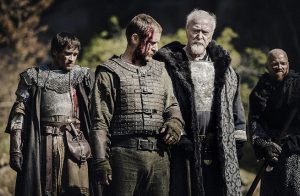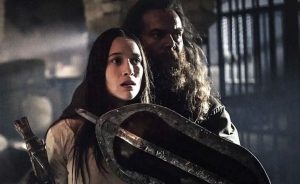The Reel Review
15th century Czech mercenary Jan Žižka kidnaps the fiancée of one of the corrupt leaders of his kingdom, the niece of the king of France, in a bid to defeat the monarchy’s armies of the Teutonic Order and the Holy Roman Empire. This historical drama about the rise of the iconic Czech military folk hero stars Ben Foster, Michael Caine and Sophie Lowe.

Director Petr Jákl ‘s big budget production looks fantastic, reminiscent of a Czech Braveheart, with all the requisite period setting and chain mail costumes, some intensely gruesome battlefield scenes, a solid score, and compelling performances from Ben Foster and Sophie Lowe (Blow the Man Down). Michael Caine and Matthew Goode (Downton Abbey) appear respectively in relatively minor roles as Lord Boresh, who hires Žižka for the lady-kidnapping, and as Sigismund, King Wenceslas’s villainous, power-hungry, younger half-brother.

Where Medieval falls short, however, is in a meandering, often confusing, and overly complicated story, which detracts from the film’s most interesting element – Žižka’s legendary innovation as a war tactician. Žižka’s clever incorporation of guerilla warfare, using battlefield terrain to his strategic advantage, and first of their kind war wagons – cannons on wagons some 500 years prior to the creation of modern tank warfare – gave his vastly outnumbered peasants and rebels an impressive battlefield advantage. More of that, and less of the pointless dialogue would have gone a long way. But even despite the muddled story, historians will at least appreciate the film’s accuracy and a nicely done finalé.
REEL FACTS
• With a budget of more than $20 million, Medieval is the most expensive Czech film ever made.

• Jan Žižka is one of the few military commanders throughout history to have never lost a battle he led, despite losing an eye early in his life and losing the second in his final years prior to his death from a gruesome carbuncle bacterial infection in 1424.
• Following Žižka’s death, a legend arose that he had requested that his skin be flayed from his body when he died and made into a drum, so he could continue to lead his fellow Protestant Hussites into battle.



